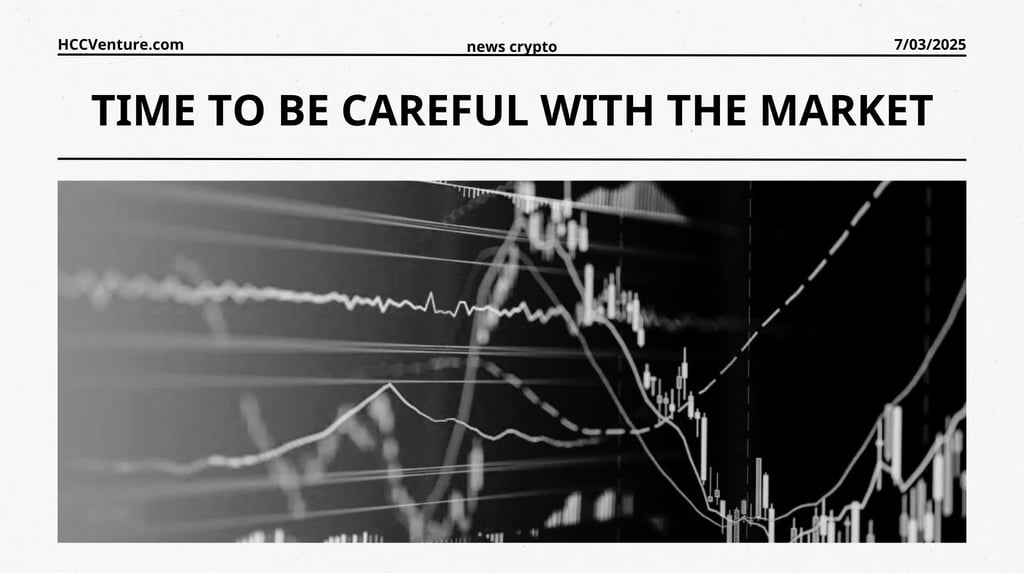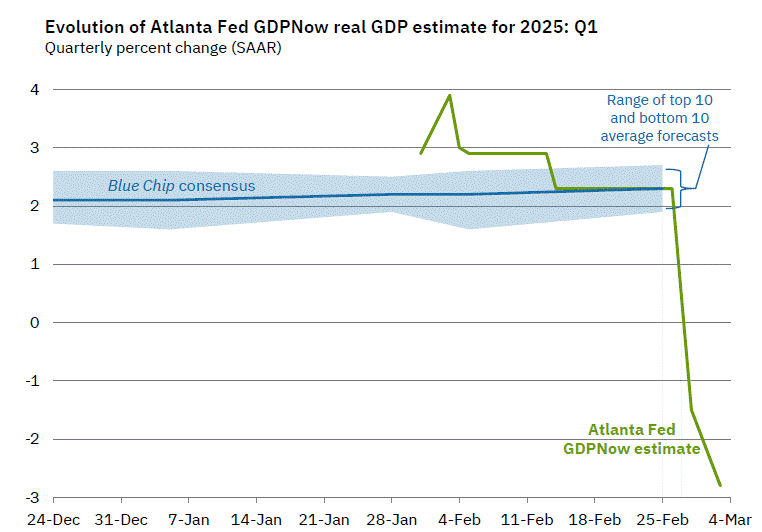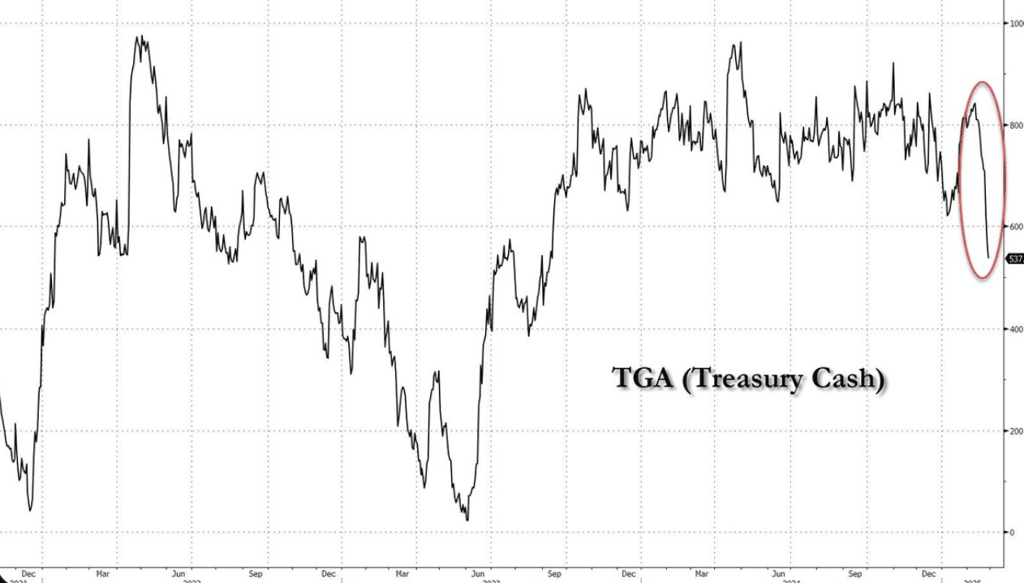Crypto Market: Euphoria, Risks, and Signs of Cycle Peaks
The cryptocurrency market has been in a massive bull market for more than two years. What was once considered a fantasy – like governments officially recognizing and supporting crypto – has now become a reality. However, this excitement could be a sign of a peaking market cycle, which comes with worrying risks.
3/7/20254 min read


Trump and the Uncertainty Around Memecoin
The launch of the memecoin TRUMP by former President Donald Trump was expected to usher in a new financial model in the crypto industry, where tokens could combine cultural, political, and economic values. But the reality turned out differently. The campaign lacked transparency, without any clear guidelines or strategies , leaving both the community and investors confused. As a result, other projects also imitated this model in an irresponsible manner, such as the case of Milei , setting a bad precedent for the industry.
The failure to bring practical value to the TRUMP token has led many to criticize crypto in general. Instead of creating a successful example of the utility of memecoin, the campaign has inadvertently become a “weapon” for those who oppose the crypto industry . This may just be the beginning of a stronger wave of criticism in the future.
SEC Withdrawal – Optimistic Signal or Just a Short-Term Setback?
The SEC recently dismissed several major lawsuits against crypto companies like Coinbase, Uniswap, and Consensys , which was initially seen as a positive sign. But shortly after, Trump tweeted about the “Strategic Crypto Reserve ,” promising that the U.S. government would include XRP, ADA, and SOL in its portfolio. This was a controversial announcement.
XRP and ADA have long been considered “zombie chains” – ecosystems that are underdeveloped or lack the incentive to innovate. The fact that a government is stepping in and buying highly speculative and highly centralized crypto assets raises many questions: Should taxpayers’ money be used to buy such digital assets? Does this move actually create economic value or is it simply a tool for market manipulation?
Many long-time crypto investors have welcomed this as a sign that the bull run is still ongoing. But upon deeper analysis, this may just be a temporary political stunt , not a sustainable strategy for the long-term growth of the market.
Is the Risk of Recession Rising?
Over the past few years, the US economy has been fueled by massive fiscal spending , even as the Federal Reserve (Fed) has implemented a quantitative tightening policy (QT) . This has helped maintain economic growth, but cutting government spending sharply could push the economy into recession .
The 2025 US budget projects a deficit of around $300 billion , which could reduce the amount of money being pumped into the economy . Meanwhile, falling consumer spending , combined with weakening net exports due to the impact of tariff policies, poses a risk of slowing GDP growth.


DOGE, Elon Musk and Their Role in Economic Policy
The initial view that Elon Musk cannot have a significant impact on government spending is slowly changing. Trump's full support for Elon Musk's fiscal policies shows a change in his approach to economics.
Musk and his team have pushed for policies that drastically cut what they call “fraud, waste, and abuse” in government spending. While this is a good move in terms of balancing the budget, we can’t ignore the fact that government spending is also income for many groups of workers in the economy .
So what will replace this cut in capital flows to continue to boost growth?
One solution could come from deregulation , which reduces barriers to business and encourages investment.
However, policy changes take time to permeate the economy , which means we are likely to face a period of temporary fiscal tightening before growth returns.
Market Outlook: Waiting for Stability or Facing Volatility?
With all the fiscal policy volatility , crypto regulatory uncertainty, and changes in spending patterns , investors need to keep a close eye on what comes next:
Can the Trump administration balance tight fiscal policy and spur economic growth?
How will the crypto market react when government cash flows decline?
Will DOGE and Elon Musk-Related Projects Play a More Important Role in the Digital Economy?
Escalating Tariffs – A New Engine for Inflation?
Recently, Trump officially imposed a 25% tax on all goods from Canada and Mexico , and increased the tax on imported goods from China from 10% to 20% . These tariff policies will certainly directly affect the supply chain, commodity prices and inflationary pressure in the US.
Impact on inflation : When tariffs increase, the cost of importing goods increases, pushing up retail prices. End consumers are the ones who are most affected.
Financial Market Instability : As businesses face higher costs, profits are affected, leading to negative adjustments in the stock and crypto markets.
The question is: Will the Fed adjust monetary policy to counter these effects?


The Fed, Liquidity, and the Competition Between Policies
If fiscal spending slows and financial markets experience sell-offs, the Federal Reserve will have to act . But the timing is a problem — the Fed may wait too long to respond , creating the risk that fiscal stimulus is not strong enough to offset the economic slowdown.
This is especially important when we consider the issue of market liquidity :
The US Treasury General Account (TGA) could be a liquidity support factor in the short term , but it will need to be replenished as soon as the debt ceiling debate is resolved.
The depletion of Reverse Repo (RRP) also suggests that additional liquidity from the Fed will be limited , adding pressure to risk asset markets.
In other words, if the Fed doesn't act quickly enough, even rate cuts won't be enough to support the economy, and financial markets could suffer negative effects in the short term .
Conclusion – An Unpredictable Period for Investors
We are entering a volatile economic period with impacts from many directions:
Escalating tariffs are raising the risk of inflation and threatening the stability of supply chains.
Interest rate cuts may not be strong enough to offset the decline in spending and investment .
The Fed may act too slowly , increasing the risk of a recession before any signs of recovery emerge.
In this context, investors need to closely monitor fiscal and monetary policy moves , as well as how these decisions affect cash flows in risk asset markets.
Explore HCCVenture group
HCCVenture © 2023. All rights reserved.


Connect with us
Popular content
Contact to us
E-mail : holdcoincventure_contact@hccventure.com
Register : https://linktr.ee/holdcoincventure
Disclaimer: The information on this website is for informational purposes only and should not be considered investment advice. We are not responsible for any risks or losses arising from investment decisions based on the content here.


TERMS AND CONDITIONS • CUSTOMER PROTECTION POLICY
ANALYTICAL AND NEWS CONTENT IS COMPILED AND PROVIDED BY EXPERTS IN THE FIELD OF DIGITAL FINANCE AND BLOCKCHAIN BELONGING TO HCCVENTURE ORGANIZATION, INCLUDING OWNERSHIP OF THE CONTENT.
RESPONSIBLE FOR MANAGING ALL CONTENT AND ANALYSIS: HCCVENTURE FOUNDER - TRUONG MINH HUY
Read warnings about scams and phishing emails — REPORT A PROBLEM WITH OUR SITE.
